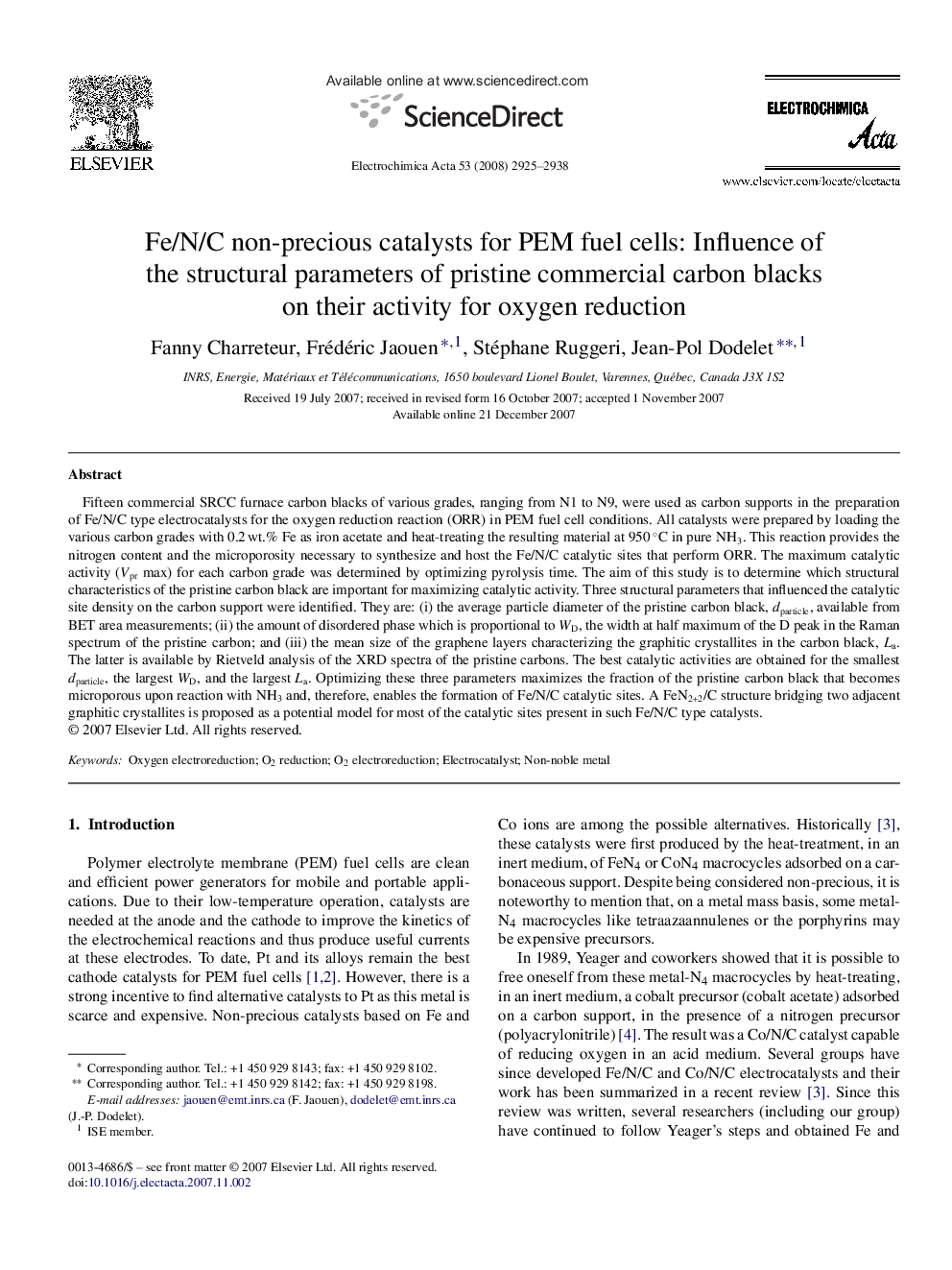| Article ID | Journal | Published Year | Pages | File Type |
|---|---|---|---|---|
| 193581 | Electrochimica Acta | 2008 | 14 Pages |
Fifteen commercial SRCC furnace carbon blacks of various grades, ranging from N1 to N9, were used as carbon supports in the preparation of Fe/N/C type electrocatalysts for the oxygen reduction reaction (ORR) in PEM fuel cell conditions. All catalysts were prepared by loading the various carbon grades with 0.2 wt.% Fe as iron acetate and heat-treating the resulting material at 950 °C in pure NH3. This reaction provides the nitrogen content and the microporosity necessary to synthesize and host the Fe/N/C catalytic sites that perform ORR. The maximum catalytic activity (Vpr max) for each carbon grade was determined by optimizing pyrolysis time. The aim of this study is to determine which structural characteristics of the pristine carbon black are important for maximizing catalytic activity. Three structural parameters that influenced the catalytic site density on the carbon support were identified. They are: (i) the average particle diameter of the pristine carbon black, dparticle, available from BET area measurements; (ii) the amount of disordered phase which is proportional to WD, the width at half maximum of the D peak in the Raman spectrum of the pristine carbon; and (iii) the mean size of the graphene layers characterizing the graphitic crystallites in the carbon black, La. The latter is available by Rietveld analysis of the XRD spectra of the pristine carbons. The best catalytic activities are obtained for the smallest dparticle, the largest WD, and the largest La. Optimizing these three parameters maximizes the fraction of the pristine carbon black that becomes microporous upon reaction with NH3 and, therefore, enables the formation of Fe/N/C catalytic sites. A FeN2+2/C structure bridging two adjacent graphitic crystallites is proposed as a potential model for most of the catalytic sites present in such Fe/N/C type catalysts.
